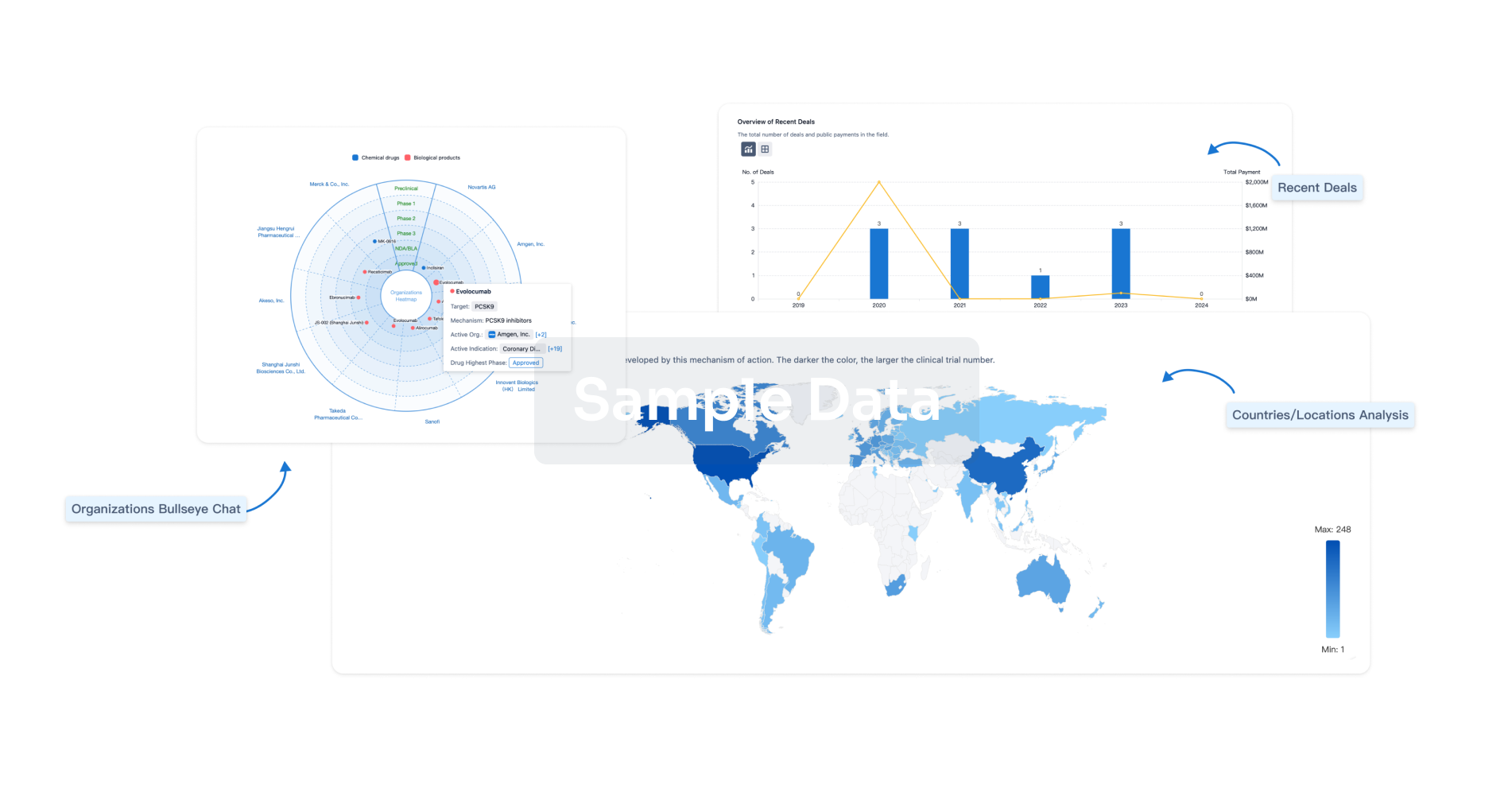Request Demo
Last update 08 May 2025
VDCCs x M2 receptor x Potassium channel
Last update 08 May 2025
Basic Info
Related Targets |
Related
1
Drugs associated with VDCCs x M2 receptor x Potassium channelMechanism M2 receptor antagonists [+2] |
Active Org. |
Originator Org. |
Active Indication |
Inactive Indication- |
Drug Highest PhaseApproved |
First Approval Ctry. / Loc. Japan |
First Approval Date01 Jan 1994 |
100 Clinical Results associated with VDCCs x M2 receptor x Potassium channel
Login to view more data
100 Translational Medicine associated with VDCCs x M2 receptor x Potassium channel
Login to view more data
0 Patents (Medical) associated with VDCCs x M2 receptor x Potassium channel
Login to view more data
3
Literatures (Medical) associated with VDCCs x M2 receptor x Potassium channel07 Jul 2021·Cardiovascular ResearchQ1 · MEDICINE
Preclinical evidence for the therapeutic value of TBX5 normalization in arrhythmia control
Q1 · MEDICINE
Article
Author: Zimmermann, Wolfram-Hubertus ; Jungmann, Andreas ; Fabritz, Larissa ; Noack, Claudia ; Zafeiriou, Maria-Patapia ; Dewenter, Matthias ; Blenkle, Alica ; Renger, Anke ; Müller, Oliver J ; Syeda, Fahima ; Iyer, Lavanya M ; El-Armouche, Ali ; Toischer, Karl ; Rathjens, Franziska S ; Zelarayan, Laura C
15 Apr 2015·The Journal of PhysiologyQ2 · MEDICINE
Rebuttal from Alicia D'Souza, Sanjay Sharma and Mark R. Boyett
Q2 · MEDICINE
Article
Author: Sharma, Sanjay ; Boyett, Mark R. ; D'Souza, Alicia
01 Apr 2011·The Journal of PhysiologyQ2 · MEDICINE
BK channel β1 subunits regulate airway contraction secondary to M2 muscarinic acetylcholine receptor mediated depolarization
Q2 · MEDICINE
Article
Author: Herlihy, Jeremiah T. ; Wang, Bin ; Brenner, Robert ; Semenov, Iurii
Analysis
Perform a panoramic analysis of this field.
login
or

AI Agents Built for Biopharma Breakthroughs
Accelerate discovery. Empower decisions. Transform outcomes.
Get started for free today!
Accelerate Strategic R&D decision making with Synapse, PatSnap’s AI-powered Connected Innovation Intelligence Platform Built for Life Sciences Professionals.
Start your data trial now!
Synapse data is also accessible to external entities via APIs or data packages. Empower better decisions with the latest in pharmaceutical intelligence.
Bio
Bio Sequences Search & Analysis
Sign up for free
Chemical
Chemical Structures Search & Analysis
Sign up for free
